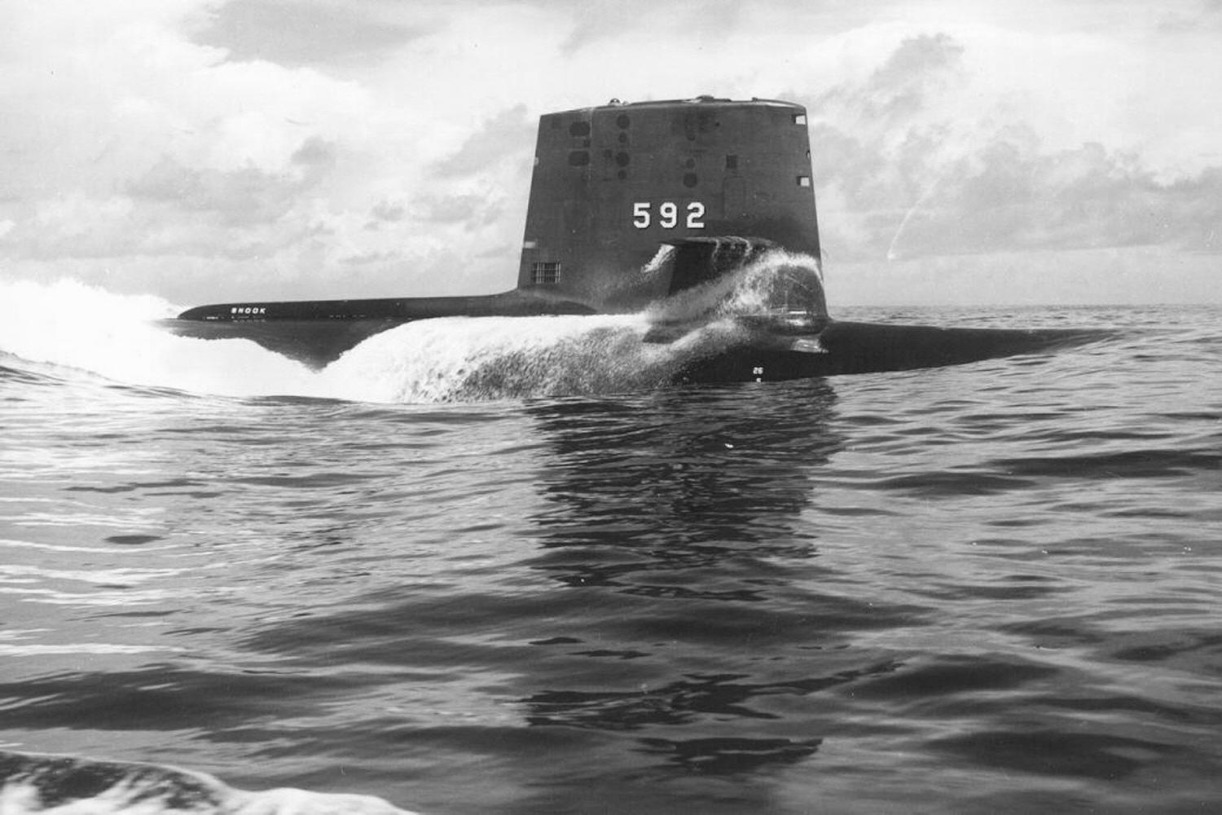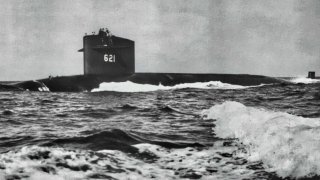How a U.S. Navy Nuclear Attack Submarine 'Imploded'
On April 10, 1963, the USS Thresher, a nuclear-powered submarine, tragically sank during deep-diving tests 220 miles off the coast of Cape Cod, Massachusetts. All 129 crew members and civilian technicians aboard were lost.
What You Need to Know: On April 10, 1963, the USS Thresher, a nuclear-powered submarine, tragically sank during deep-diving tests 220 miles off the coast of Cape Cod, Massachusetts. All 129 crew members and civilian technicians aboard were lost.

-The U.S. Navy determined that a leak in a saltwater piping system caused electrical short circuits, leading to system failures and an inability to surface, resulting in the submarine’s implosion. This disaster led to the establishment of the Submarine Safety Program (SUBSAFE), which ensures the integrity and safety of all U.S. Navy submarines.
-The Thresher incident remains a stark reminder of the risks of early submarine operations.
Submarine operations, whether during peacetime or wartime, are among some of the riskiest undertakings in the United States Navy. Sure, all aspects of military operations, regardless of service, are dangerous. But just think of the physics-defying operations of submarines.
Think of all the advanced technological systems that go into making submarines work. Consider the importance of having well-trained sailors serving aboard these complex systems.
Now, think back to what submarine operations back in 1963 must have been like. Back then, the technology that modern submariners take for granted were simply unavailable.
The Loss of a Submarine
On April 10, 1963, the single-worst submarine disaster in the history of the United States Navy occurred around 220 miles off the coast of Cape Cod, Massachusetts. At that time, the USS Thresher (originally the lead boat of its class) was undergoing deep-diving tests. Sadly, despite the routine nature of these deep-diving tests, the Thresher sank. She was lost with all hands—129 crewmembers and civilian technicians—on that day.
Although there was an official Navy finding as to how and why the submarine was lost with all hands during routine trials, the loss of this submarine 61 years after it sank, remains a hotly debated topic. Officially, the Navy concluded that the leak in a saltwater piping system led to a series of electrical short circuits. These short circuits, in turn, disabled key systems (such as propulsion and ballast control) while the crew was testing the submarine’s maximum depth.
What’s more, the submarine was unable to surface. And, once the crew took the submarine down below its maximum operating depth, with these key systems failing and the submarine unable to return to the surface, led to an implosion of the submarine.
In the years since the Navy’s official findings on the matter were posted, deeper investigations have been conducted. Some of these investigations concluded that the presence of saltwater and/or the short-circuiting of key systems onboard might have prompted the powerful nuclear reactor to scram or engage an emergency shutdown.
It is believed by many observers that, back in 1963, American submarines lacked the rapid restart feature that most nuclear-powered submarines today have. Because of this, the crew could not return to the surface before their predicament became catastrophic.

Needless to say, the loss of this submarine was a highly caustic event in the annals of US Navy submarine operations. It prompted a cascade of reform that ultimately led to the Submarine Safety Program (SUBSAFE).This SUBSAFE Program ensured watertight integrity and that any submarine in a similar situation that the Thresher found itself in could recover without a catastrophic loss.
A Cautionary Tale
The loss of the USS Thresher serves as a cautionary tale from a time when nuclear-powered submarine operations were still in their infancy for the US Navy. Nuclear-powered submarines conferred great strategic advantages onto the US Navy. Yet, they brought with them severe complications that the Navy, when the Thresher was sunk, had just not fully thought through.
Ultimately, the loss of the Thresher not only prompted change in protocols for the Navy but it resulted in the changing of the name of the class of submarine to which the Thresher belonged. Since the USS Thresher was the original ship of what was to be the Thresher-class, the loss of this submarine meant that the entire line had to be renamed. It eventually became known as the Permit-class.
But the tragedy—and legacy—of the USS Thresher will never be forgotten.
Author Experience and Expertise: Brandon J. Weichert
Brandon J. Weichert, a National Interest national security analyst, is a former Congressional staffer and geopolitical analyst who is a contributor at The Washington Times, the Asia Times, and The-Pipeline. He is the author of Winning Space: How America Remains a Superpower, Biohacked: China’s Race to Control Life, and The Shadow War: Iran’s Quest for Supremacy. His next book, A Disaster of Our Own Making: How the West Lost Ukraine, is due October 22 from Encounter Books. Weichert can be followed via Twitter @WeTheBrandon.
All images are Creative Commons or Shutterstock.
From the Vault
Russia Freaked Out: Why the U.S. Navy 'Unretired' the Iowa-Class Battleships
Battleship vs. Battlecruiser: Iowa-Class vs. Russia's Kirov-Class (Who Wins?)


